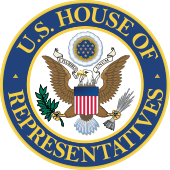U.S. Senate
U.S. House of Representatives
Join us for a bi-partisan, bi-cameral discussion of the timeline and budget appropriations for the U.S. Department of Homeland Security including the upcoming sequester, Continuing Resolution (CR) and a detailed outlook for FY 2014.
PARKING IS DIFFICULT. METRO AT UNION STATION OR PARK AT UNION STATION. SOME STREET PARKING. ALLOW MORE TIME FOR PARKING. WE WILL START PROMPTLY AT 1:30 PM.
About the Senate Homeland Security Appropriations Committee
The Senate Appropriations Committee is the largest committee in the U.S. Senate, consisting of 30 members in the 111th Congress. Its role is defined by the U.S. Constitution, which requires “appropriations made by law” prior to the expenditure of any money from the Federal Treasurey. The Committee, Chaired by Barbara Mikulski (D-MD), wries the legislation htat allocates federal funds to the numerous government agencies, departments and organizations on an annual basis. Appropriations are limited to the levels set by a Budget Resolution, drafted by the Senate Budget Committee. Twelve subcommittees are tasked with drafting legislation to allocate funds to government agencies within their jurisdictions. These subcommittees are responsible for reviewing the President’s budget request, hearing testimony from government officials, and drafting the spending plans for the coming fiscal year. Their work is passed on to the full Senate Appropriations Committee, which may review and modify the bills and forward them to the full Senate for consideration.
The Committee is also responsible for supplemental spending bills, which are sometimes needed in the middle of a fiscal year to compensate for emergency expenses.
The Homeland Security Subcommittee’s Jurisdiction includes:
Agricultural Quarantine Inspection (USDA)
Chief Medical Officer (DHS)
Customs and Border Protection (DHS)
Disaster Relief (DHS)
Disaster Assistance Direct Loan Program (DHS)
Domestic Nuclear Detection Office (DHS)
Emergency Food and Shelter (DHS)
Federal Emergency Management Agency
Federal Law Enforcement Training Center (DHS)
Flood Map Modernization Fund (DHS)
Homeland Security, Department of (DHS)
Immigration and Customs Enforcement (DHS)
Infrastructure Protection and Information Security (DHS)
Intelligence and Analysis (DHS)
National Capital Region Coordination Office
National Flood Insurance Fund (DHS)
Office of Grants and Training
Pre-disaster Mitigation Fund
Preparedness Directorate
Science and Technology (DHS)
Strategic Border Initiative (DHS)
Transportation Security Administration (DHS)
U.S. Citizenship and Immigration Services (DHS)
U.S. Coast Guard (DHS)
U.S. Fire Administration
U.S. Secret Service (DHS)
US VISIT (DHS)
About the House Appropriations Committee, Sucommittee on Homeland Security On March 2, 1865, the House of Representatives separated the appropriating and banking and currency duties from the Committee on Ways and Means, which was first established in 1789, and assigned them to two new committees – the Committee on Appropriations and the Committee on Banking and Currency. Until 1865, all “general” appropriations bills had been controlled in the House by the Committee on Ways and Means – also in charge of revenue measures and some other classes of substantive legislation.Membership of the Committee. The new Committee on Appropriations – six Republicans and three Democrats – was appointed on December 11, 1865, in the 1st session of the 39th Congress, and first reported the general appropriations bills for the fiscal year 1867. By 1920, the number of members had grown to 21. It was changed that year to 35 and gradually increased to 50 by 1951. Until recently, the Committee numbered 66 members, but has since reduced its ranks to 50 members.
Continued
Its jurisdiction is the U.S. Department of Homeland Security.




